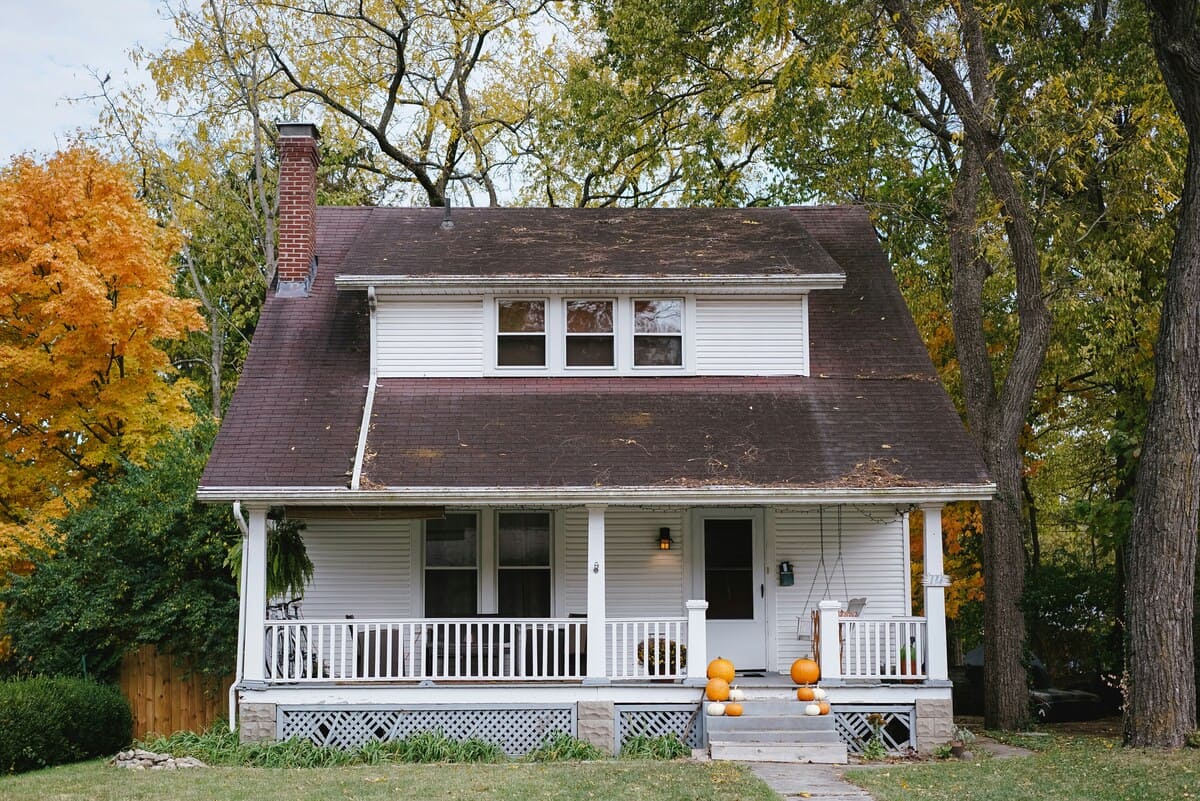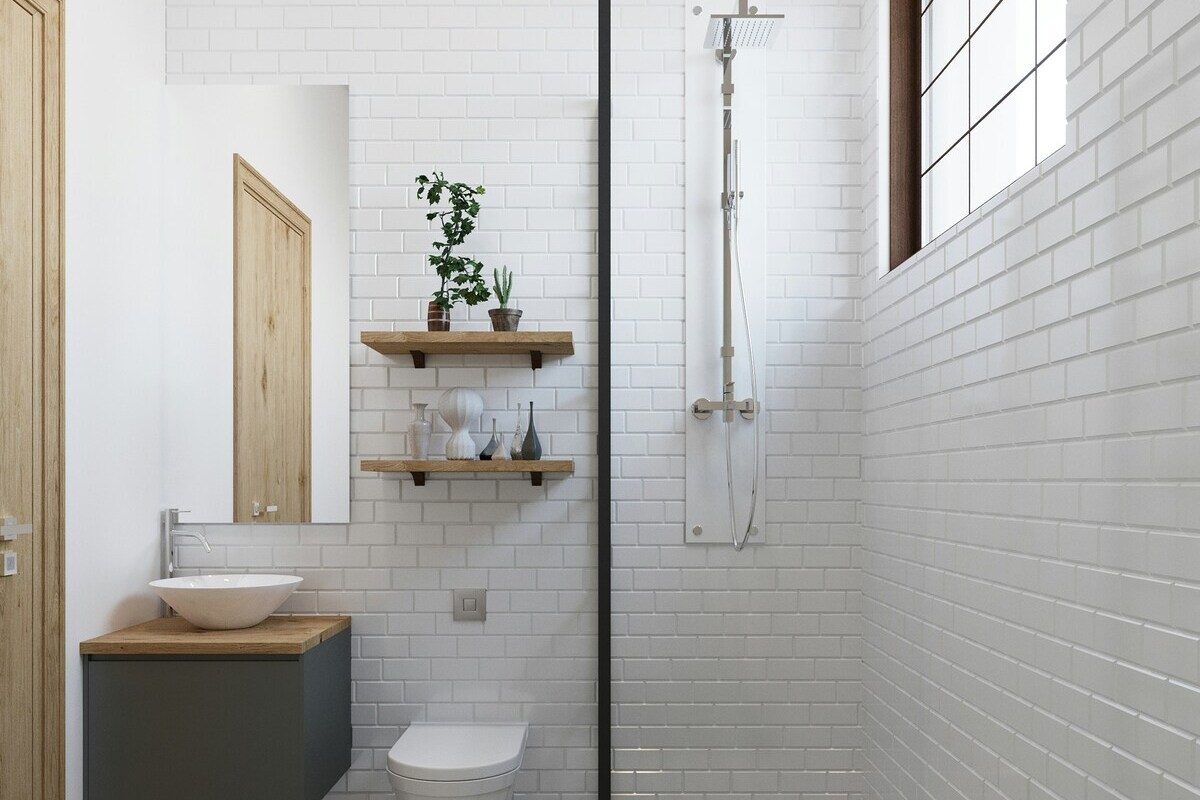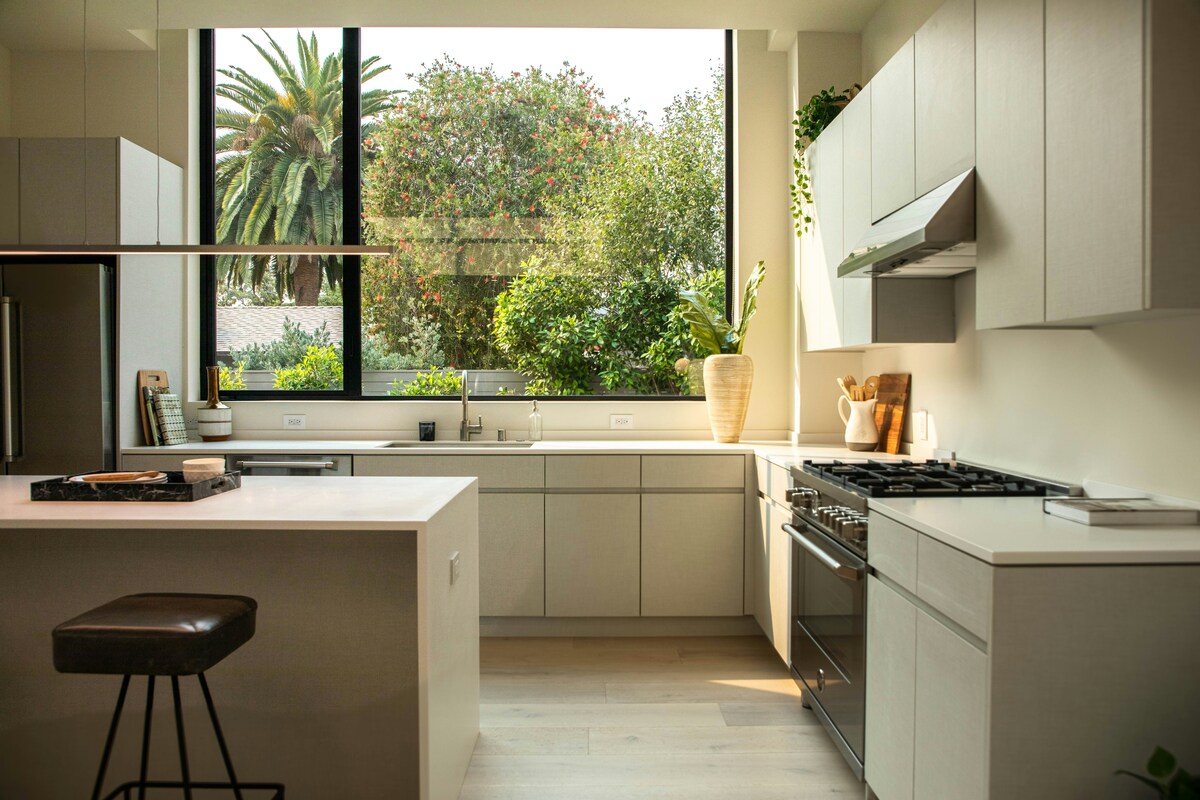Eco-Friendly Bathroom Renovation Ideas
In California, eco-friendly or green home design and construction seem like a trend to impress neighbors and potential buyers. Although the results can make a positive impression and emphasize your dedication to environmental responsibility, sustainable living is critical throughout the state.
More than ever, Californian residents need access to clean drinking water, efficient power generation, and other valuable resources. Homeowners have an obligation to reduce the negative impact their lifetime consumption cycle has in the region. When planning and implementing a new construction, renovation, remodel, or add-on project today, your choices can help guarantee residents and even visitors to the state have access to the resources they need for years to come.
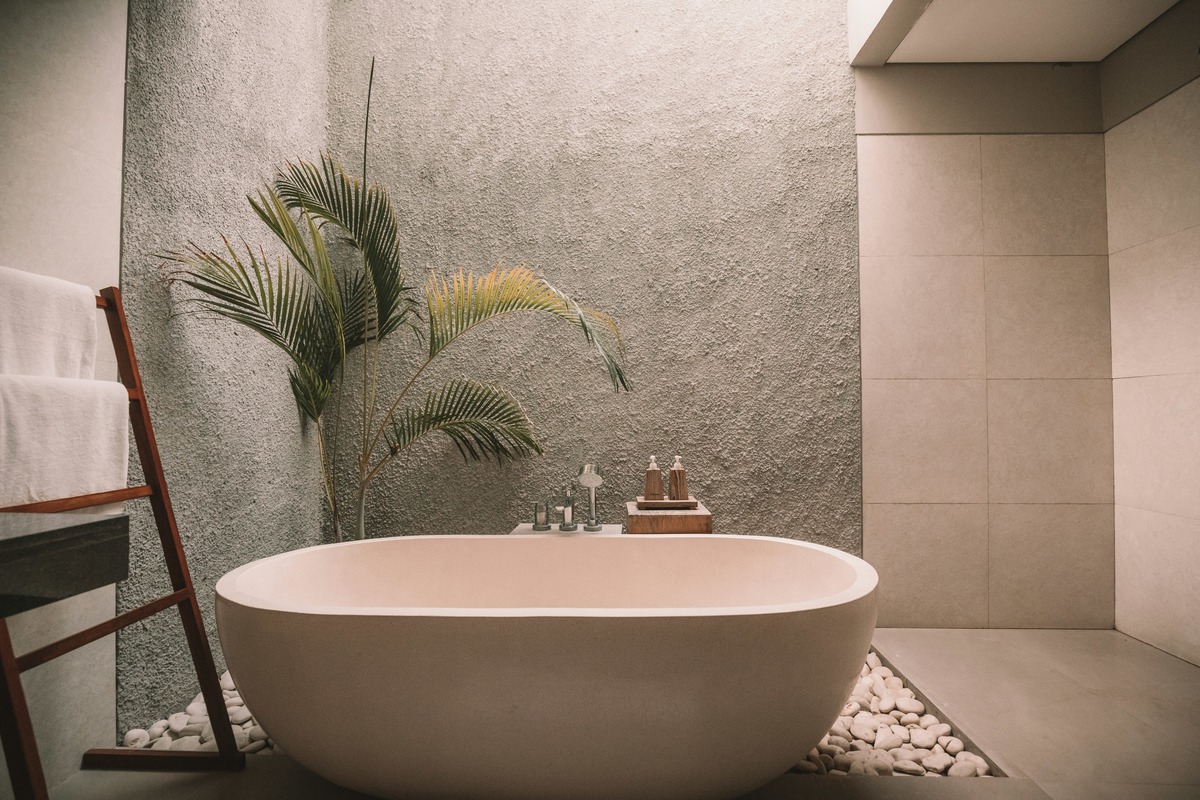
Of course, environmentally friendly home changes offer plenty of valuable additional benefits. These upgrades provide the best return on investment in the industry. As a result, you can save and eventually make money via eco renovations. Homeowners usually enjoy greater curbside appeal, better insurance and loan rates, lower utility bills, and, when applicable, more leverage during sales processes.
An eco-friendly bathroom renovation is often considered one of the easiest ways to help protect the environment. It’s also one of the best changes you can make to your home to save money and increase overall value.
The Bathroom and Waste
Many Americans fail to realize the number of resources they waste in their homes. For example, the U.S. Environmental Protection Agency notes that an individual uses approximately 82 gallons of water on average every day.
A lot of wastefulness occurs in a home’s bathroom. If you take a tub bath, you might use up to 70 gallons of water. Flushing an older residential toilet causes the loss of approximately 6 gallons per flush. Using a traditional bathroom faucet results in approximately 2.2 gallons of loss per minute.
Water-efficient appliances, fixtures, and other systems can reduce home water loss by at least 20% and save you hundreds of dollars on related bills. More importantly, this is merely one area of bathroom inefficiency improved by an eco-friendly renovation. Modern eco-design and upgrades for your bathroom can improve energy efficiency, prevent sick building scenarios, and even make the space more accessible and functional.
What is Eco-Friendly Renovation?
Eco changes for a bathroom range widely. For example, install a more energy-efficient heater, invest in lighting systems that use less power, or replace toxic materials that break down and release harmful chemicals into the air. The following list covers the top areas you should change to make your bathroom more green:
Toilet
Environmentally friendly, modern toilets come in all shapes and sizes. The most responsible products, known as low-flow toilets, offer one of the following three energy- and water-saving flush options:
- Gravity Assist: The toilet relies on gravity to help move urine, fecal matter, and tissue rapidly from the bowl.
- Power Flush: The toilet pushes everything in the bowl into the pipes with pressurized air.
- Dual Flush: The toilet uses less water to flush liquids than solids.
Without appropriate attention to the amount of toilet tissue used at any given time, all three options can clog pipes more easily than standard toilets. Also, power flush toilets sometimes annoy people because of noise generated by the pressurized air. Any model that offers automated extras, such as auto lid closure, a bidet, or a seat warmer, uses electricity.
That said, low-flow technology takes up less space than traditional products because of a narrower profile and smaller tank. A toilet stickered with the EPA’s WaterSense label, which indicates a certified waste-reduction and conservation design, costs more initially but saves you enough over time to offset the cost.
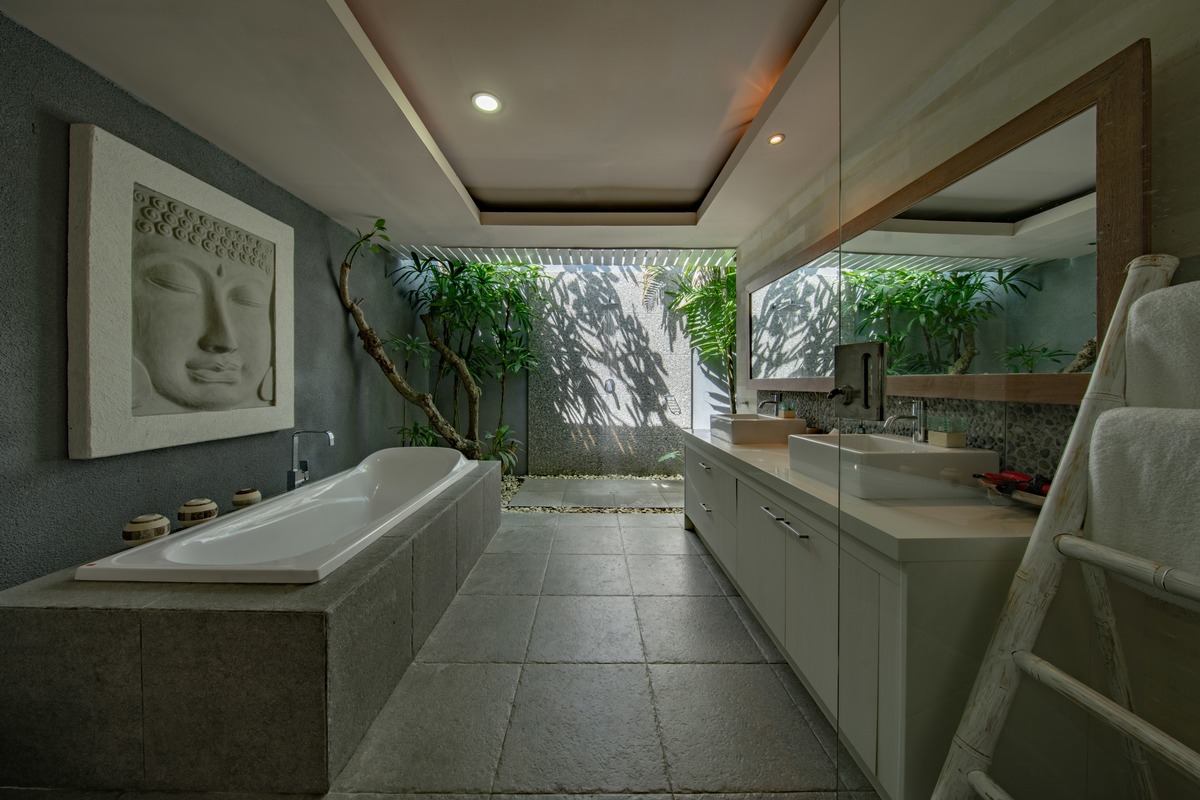
Bath
Given the high volume of water lost during a tub bath, any shower offers a greener bathing alternative. Additionally, certain shower materials help reduce construction waste and protect against harmful materials reaching municipal landfills and dump sites. You can reduce water and energy consumption and guarantee long-term sustainability by choosing:
- Water-Saving Showerheads: A modern showerhead might offer you the option to adjust the water flow manually, or it may automatically reduce usage. For example, some showerheads mimic different types of rainfall across a wider area for a faster rinse-off. Other showerheads offer built-in timers that monitor usage, warn you to rinse with an alarm, and then shut off the water after a preset amount of time.
- Sustainable Enclosures: An enclosure made of durable natural and recycled materials, such as recycled aluminum, excess last-season tiles, and tempered glass, offers many benefits. Unlike plastic enclosures, natural materials don’t outgas harmful chemicals and provide near-endless recycling and upcycling opportunities. Excess construction materials like bricks, pavers, and tiles prevent unnecessary landfill usage. The items also help you save when following a strict project budget because they usually cost less than the latest popular trend.
Sink
Whether you run the faucet while brushing your teeth or wash your hands a lot, every action sends gray water into regional disposal and reclamation systems. Before the public can reuse it, the waste passes through several treatment processes to remove pathogens and harmful pollutants. California has more treatment facilities than most states. Each plant uses electricity and puts a significant strain on electrical grids. When you choose the following during a bathroom renovation, you help reduce the chance of brownouts and power fluctuations:
- Motion-Sensing Faucets: Many people forget to turn off a faucet completely, which allows clean water to flow or drip out of the tap and down the drain. According to the USGS Drip Calculator, even one drop lost per minute non-stop throughout the day can result in a loss of 34.7 gallons per year. You can correct this problem by investing in a motion-sensing faucet that turns off the flow automatically when you walk away from the sink.
- Water-Efficient Faucets: Another great idea to save water is an aerator screwed onto the end of the spout that mixes air and water. These faucets exert enough pressure to remove soap, dirt, and other debris without using the same amount of water as a faucet that doesn’t have one. Additionally, faucets with aerators screen out harmful materials that dislodge from the inside of pipes. If you want to shop for fixtures in antique and thrift stores or salvage shops and reuse an older faucet, several types of aerators fit non-aerator faucets.
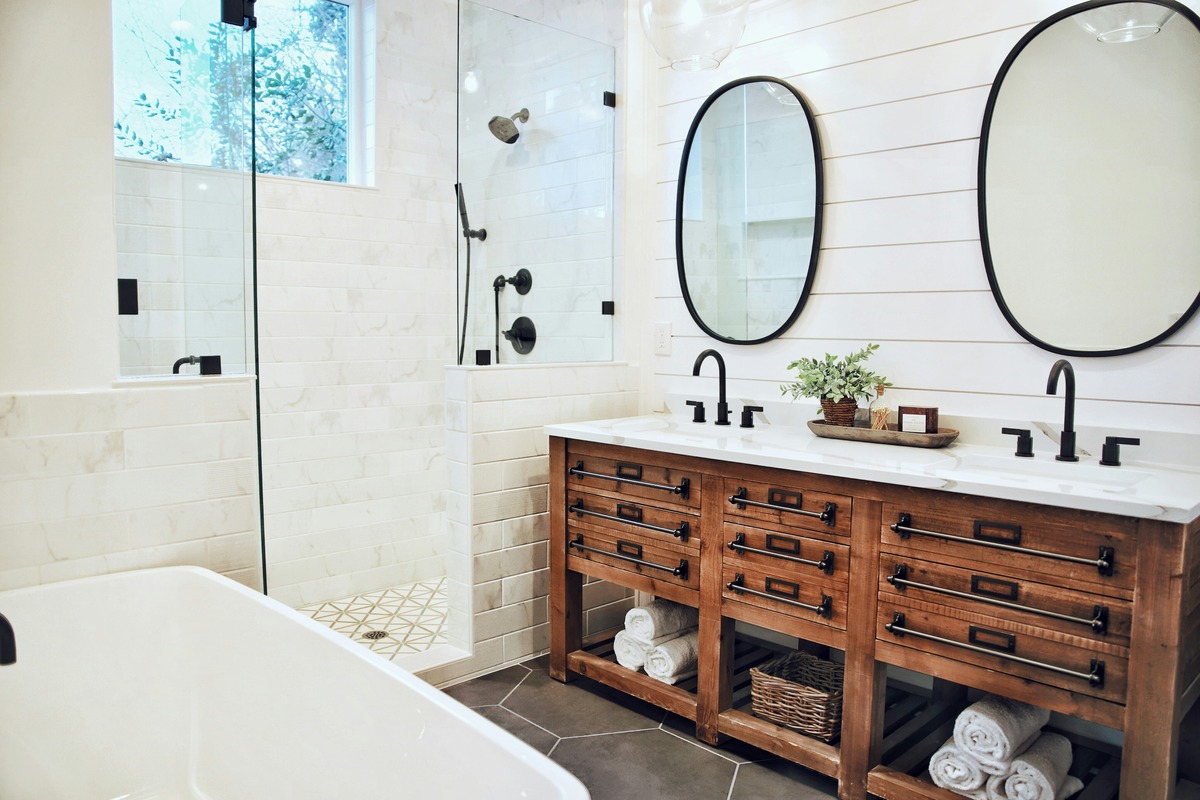
Air
The air you and your loved ones breathe in daily can contain harmful chemicals that leach out of construction materials and other items. Strong natural odors also adversely affect bathroom enjoyment. Several options exist to improve quality and maintain a flow of clean air.
- Smart Fan: People often leave a bathroom without remembering to turn off the fan they used to decrease moisture and quickly remove strong odors. An intelligent option with a motion sensor or a timer can prevent energy loss by turning on and off based on when someone uses the light switch, enters and exits the room, or a preset schedule.
- Natural Ventilation: One or more windows can also improve quality. They let in fresh breezes and lower heat and moisture that can warp the wood used in cabinets and other objects. You won’t need an electrical fan or ventilation system on a pleasantly windy day.
- Low-Maintenance Plants: Believe it or not, installing plants in a bathroom that thrive in humid environments can improve every breath you take. When coupled with other natural materials, such as stone and wood, plants also create a more relaxing atmosphere.
Temperature
The temperature inside your bathroom, the use of various types of heaters, and the heating and cooling of water can strain systems. The following ideas give you better control over temperature and related costs:
- Smart Thermostat: Whether you’re using an air conditioner or heater system, repeated manual thermostat adjustments throughout the day unnecessarily use energy. Smart thermostat technology adjusts indoor temperatures based on specific daytime and nighttime temperature goals.
- Efficient Heaters: Energy-efficient heaters, such as heat pumps and tankless water heaters, lower electricity and water bills by preventing overconsumption that occurs with older, less efficient systems. If your bathroom has an electric baseboard or radiator heater, it’s time to find a replacement that offers better energy efficiency. For example, consider a small room heater with an EnergyStar label or a large recycled aluminum or steel radiator.
- Eco Insulation: Advancements in technology have made it possible to replace toxic insulation like fiberglass with environmentally friendly and recycled insulation products that help prevent heat loss in the bathroom. Insulators wrapped around hot water source pipes avoid the loss that results when you need to clear cold water from a hot water tap.
- Circulating Loop: The technology that makes up a hot water circulating loop keeps hot water ever present in the pipe leading to the faucet so that you never have to run the tap to drain cold water that cools while stored unused in the pipes leading to the applicable side of the faucet.
Efficient Windows: Older windows often cause massive heat gain from the outdoors or loss from indoors. Coated double and triple-pane windows of glass and treated wood frames offer energy efficiency and keep the heat in the bathroom contained instead of allowing it to escape through the window area. When used with eco-friendly thin slat wood blinds, canvas, or other shades, you can also prevent heat from the sun and hot outdoor days from entering the space.
Lights
Beyond controlling the light from outside that might pour through one or more wall or skylight windows with blinds and shades, you can also decrease the energy needed to keep your home well-lit with other lighting options. The following ideas also help keep the room cool:
- Sun Tunnels: Also known as solar tubes, sun tunnels bring renewable, natural sunlight into your bathroom through an energy-efficient metal tube installed between the roof and the space. Even on an overcast day, the top of the tube collects light and sends it through the highly reflective interior of the metal tube until it reaches the opening and cover in the bathroom ceiling. Since the design prevents outdoor heat from entering the tube, you never need to worry about a sun tunnel acting as an unwanted heat source in the room.
- LED Lighting: Incandescent and CFL light bulbs don’t offer the high energy efficiency of LED lighting. The former type generates so much unwanted heat that incandescent bulbs have historically doubled as mini heaters in a home. The latter wastes energy. LED bulbs have a longer life cycle, use less energy, last longer, and offer cool-touch lighting without a lot of excess heat.
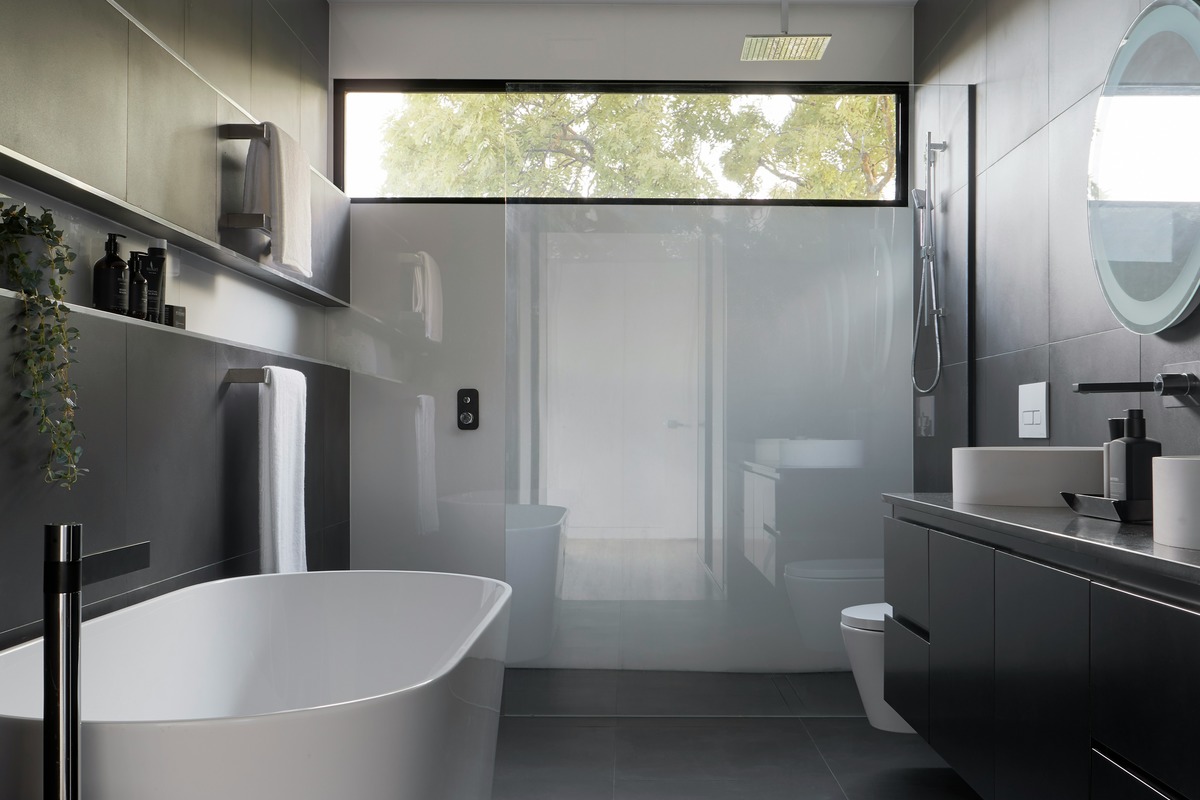
Eco-Friendly Materials: Other Ways to Protect the Environment
A green bathroom renovation doesn’t only involve upgrades to appliances, fixtures, and systems that affect power and water. The materials you choose for your bathroom can also have a net positive or negative impact on you, your loved ones, your guests, and the environment.
As previously noted, the outgassing of pollutants from traditional construction materials like simulated wood made of fiberboard can cause sick building syndrome and pollute landfills and nearby waterways. As a result, it’s critical to invest in durable materials that cause less long-term harm.
When choosing new counters, shelving, flooring, and decorative or accent materials, always prioritize biodegradable, natural, renewable, and reusable options. Many of these options cost less, which saves you a lot in the long run. For example, you might reclaim glass, metal, porcelain, tiles, and wood from previous projects or budget and thrift shops. One of the most popular recent trends is bamboo, cork, and reclaimed wood for flooring.
The adhesives, grout, and sealants chosen by the project manager and construction crew during a project are also important. The latest cutting-edge technology has resulted in formulations that contain low or no volatile organic chemicals (VOCs).
A Better World: One Room at a Time
At Rossle Homes Design & Construction, our team works with you to find the best environmentally conscious solutions for your bathroom and any other space in your home that you want to renovate with green goals in mind. For more information about these and other eco-friendly tips, call our team at (916) 500-8064 or email us at [email protected]. We can help you save time, money, and the environment.
